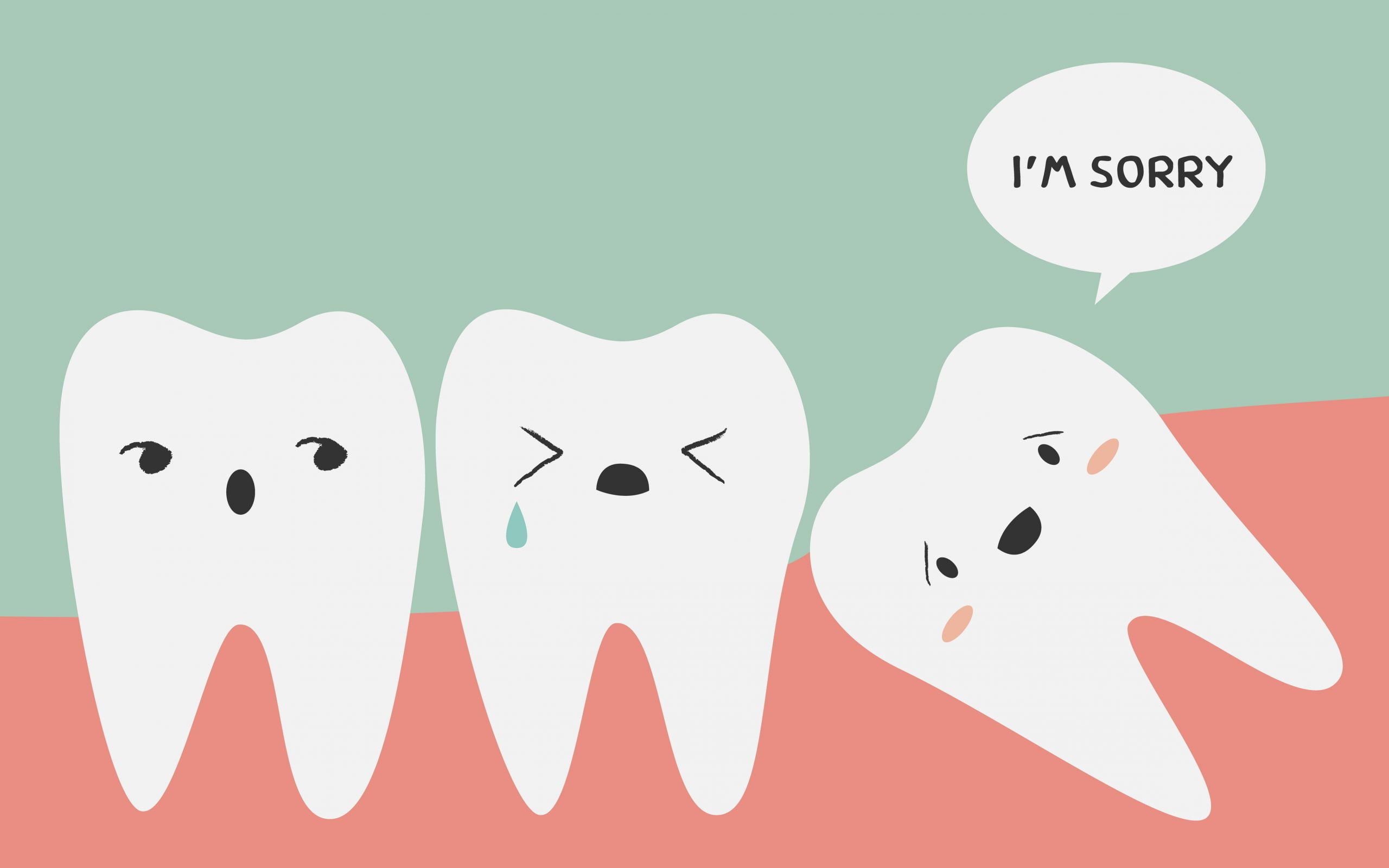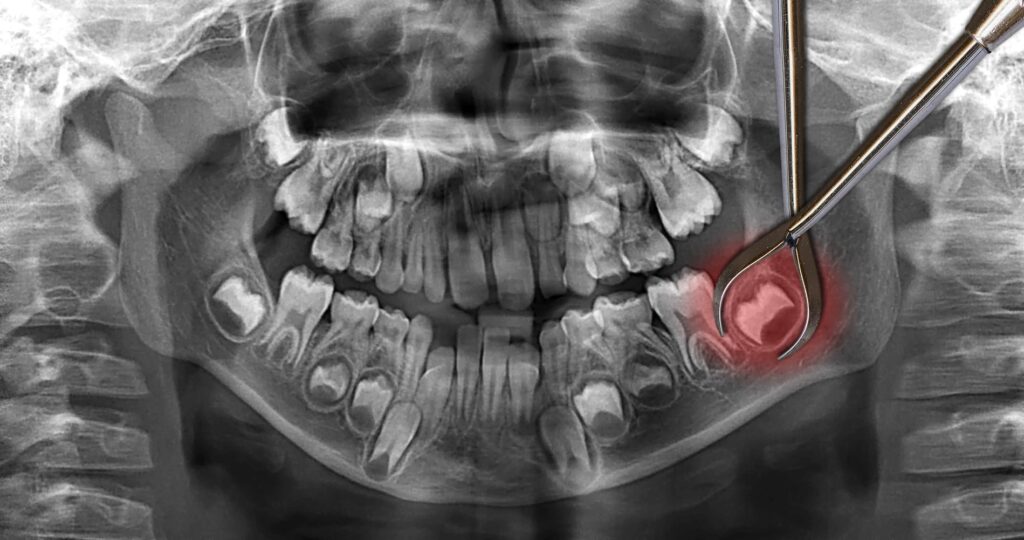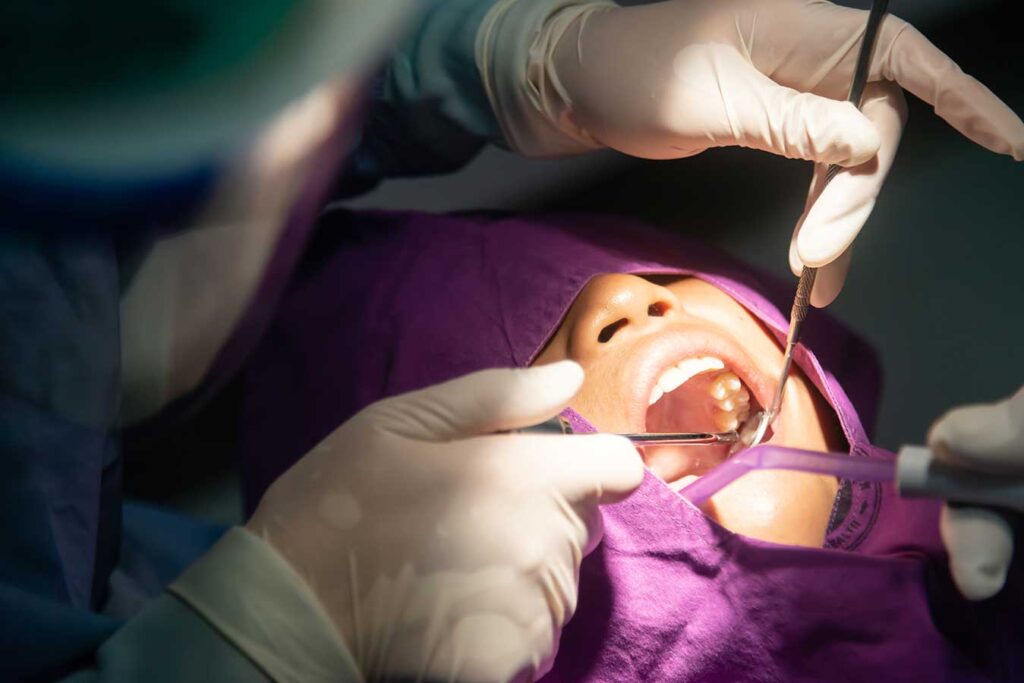
Within the shadows of your mouth, right at the back, wisdom teeth—or third molars—make their debut. Typically, these late bloomers emerge between the ages of 17 to 25, a phrase coined by scientists as the “age of wisdom”—hence their name. Unseen and usually unnoticed, it’s only when issues start surfacing that they draw attention.
The indications of troublesome wisdom teeth can range from mild discomfort to severe pain, sometimes accompanied by swelling, inflammation, and difficulty opening your mouth. You might also experience bad breath, unpleasant taste, or persistent headaches.
Despite their obscurity, wisdom teeth can cause a variety of complications, including impaction (where the tooth can’t break through the gum line), infection, damage to neighboring teeth, and formation of cysts. These issues can sometimes trigger symptoms elsewhere in the body, such as fever or malaise.
Unusual but noteworthy, such manifestations signal the necessity of a dental visit. Timely intervention can save you from future discomfort and complications and wisdom teeth extraction is usually the most optimal solution to all of the troubles.
Table of Contents
Benefits and Necessity of Wisdom Teeth Removal

Source: hovedentalclinic.co.uk
So, why consider extracting these problematic wisdom teeth? The answer lies in the potential benefits, which extend beyond mere pain relief. Removing troublesome wisdom teeth can protect the overall health of your mouth, safeguarding against crowding, gum disease, decay, and the spread of infection. It can also prevent the formation of cysts or tumors, which can cause damage to the jawbone and other teeth.
While it may seem daunting, the removal of wisdom teeth is often a preventive measure. If your dentist suggests extraction, it’s because they foresee future complications, such as potential impaction or infection. Early removal can circumvent the risk of more complex surgery later. However, not everyone needs their wisdom teeth extracted.
Your dental professional will base this decision on factors such as your mouth’s size, the teeth’s alignment, and their effect on your oral health.
Consultation with the Dentist or Oral Surgeon
Your first point of contact will usually be your dentist, who, after conducting a thorough examination—consisting of visual assessment and x-rays—will determine the state of your wisdom teeth. Should the dentist conclude that removal is necessary, they might refer you to an oral surgeon for a more detailed evaluation and treatment planning. This professional has undergone specialized training to tackle complex dental procedures and manage complications.
The consultation with the oral surgeon involves a comprehensive discussion about your medical history, the surgical process, potential risks, and recovery period. It is an opportunity to clarify your doubts and fears. So, do not hesitate to ask questions and discuss any concerns about the procedure. This open dialogue will help you make an informed decision and pave the way for a smoother experience.
Preparing for the Wisdom Teeth Removal Procedure

Source: semiahmoodental.ca
Being well-prepared is the key to an anxiety-free wisdom teeth removal experience. Start by arranging for someone—a friend, family member, or relative—to accompany you to the procedure. As the effects of anesthesia or sedation can last several hours post-operation, you’ll need a ride home. Also, ensure you have a comfortable, restful space ready for your return, complete with necessary supplies like ice packs, soft foods, and plenty of fluids.
Dietary preparations play an important role as well. You should avoid eating or drinking for at least eight hours before your surgery, as this can interfere with the anesthesia. You’ll also want to prepare a menu of soft, nutritious foods for the post-operative period—think soups, smoothies, and mashed potatoes. And lastly, don’t forget to wear loose, comfortable clothing on the day of the procedure for your comfort and ease.
Types of Anesthesia and Sedation Options
When it comes to pain management during wisdom teeth removal, various options exist. These range from local anesthesia—where only the surgical area is numbed—to sedation or general anesthesia that ensures you’re comfortably unconscious during the procedure. Your oral surgeon will suggest the most suitable option based on the complexity of the extraction and your comfort level.
Local anesthesia involves injecting a numbing agent around the surgical area. If you opt for sedation anesthesia, you’ll receive medication intravenously, leading to a semi-conscious state. General anesthesia, often used in more complex cases, involves inhaling medication or receiving it via an IV line. It results in complete unconsciousness during the procedure.
Remember, there’s no one-size-fits-all when it comes to anesthesia—it’s a decision tailored to your specific needs.
The Wisdom Teeth Removal Procedure

Source: wahroongadental.com.au
The extraction process begins once the anesthesia takes effect. Depending on the position and stage of development of your wisdom teeth, the surgeon may need to cut through gums and bone to extract them. In some cases, teeth may be divided into sections for easier removal. Despite these vivid descriptions, rest assured, the anesthesia ensures a pain-free experience.
Upon completion of the extraction, you’ll likely have stitches to help the healing process, and gauze will be applied to control any bleeding. While the procedure typically lasts between 45 minutes to an hour, it varies depending on the number and condition of the teeth being removed. Remember, the objective is safe and effective removal, not speed.
Recovery and Post-Operative Care
Once the surgery is over, the focus shifts to recovery and healing. Immediately after the procedure, you’ll rest under the watchful eye of the clinic’s staff until the effects of anesthesia diminish. Post-operative instructions will be provided to manage bleeding, control pain, prevent infection, and promote healing. It’s vital to follow these guidelines diligently for a speedy recovery.
For the initial days post-operation, you may experience some discomfort, swelling, or bruising in the treated area—all normal parts of the healing process. To minimize these symptoms, apply ice packs to the cheek area, take prescribed pain medication, and get plenty of rest. Avoid strenuous activities and stay hydrated, but refrain from using a straw as it can dislodge the blood clot that aids healing.
Final Thoughts
Embarking on the journey of wisdom teeth removal may seem daunting, yet with proper preparation and understanding, the road to recovery can be made smoother. This common procedure, usually the result of preventive care or a response to discomfort, brings lasting benefits to your oral health. With experienced professionals to guide you and armed with the knowledge from this comprehensive guide, you can face this dental milestone with confidence.







